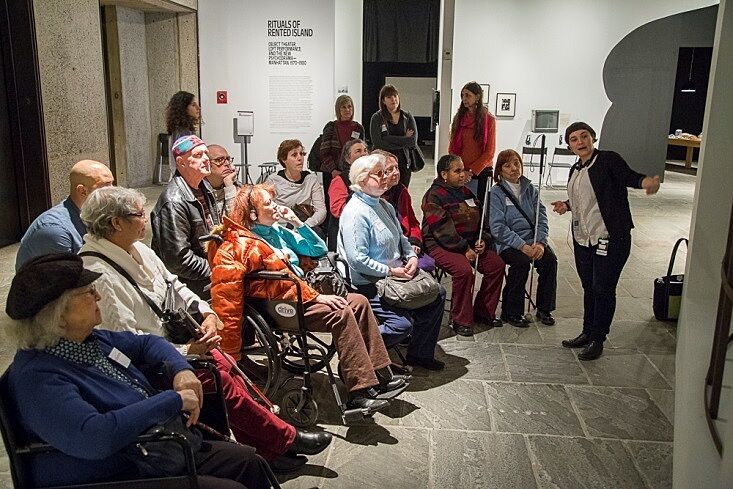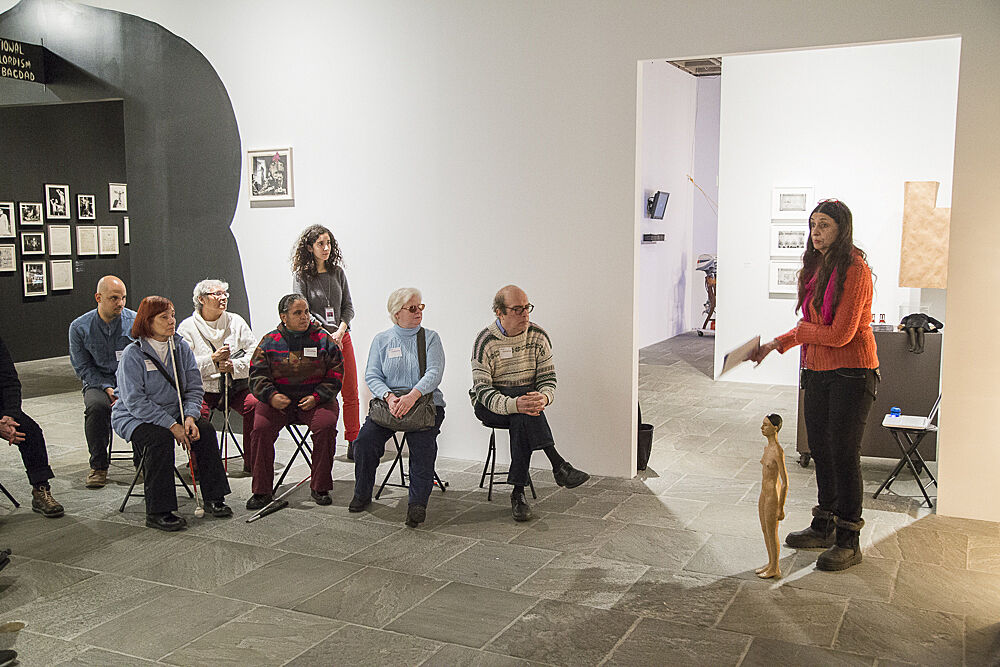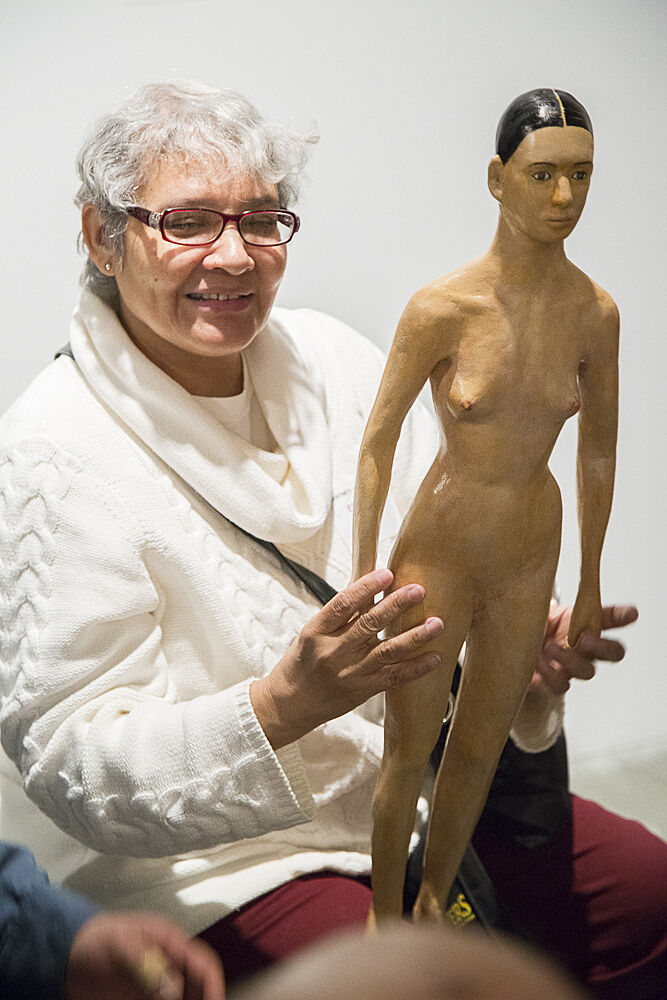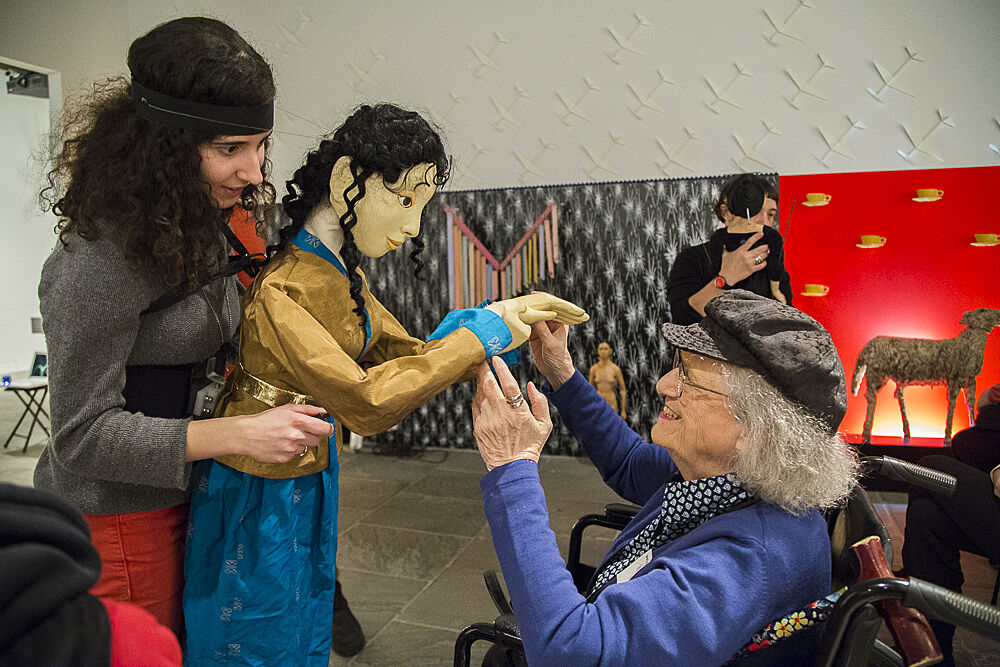Experiencing the Ephemeral: Verbal Description and Touch Tour of Rituals of Rented Island
Feb 3, 2014
Each month, the Whitney offers verbal description and touch tours for people who are blind or have low vision, giving participants the unique opportunity to physically interact with the Museum’s exhibitions. One of my first assignments as a Whitney Education Intern was to assist with one of these programs. I was curious about how the ephemeral performance pieces in Rituals of Rented Island: Object Theater, Loft Performance, and the New Psychodrama—Manhattan, 1970–1980 would be made tangible for this audience. The exhibition documented the work of radical performance artists in Manhattan during the 1970s. At the time, artists were incorporating and responding to their urban environment, presenting live performance in alternative spaces such as storefronts, sidewalks, and vacant lofts.
My question was answered after meeting artist Theodora Skipitares, whose handmade puppets and sets were included in the exhibition. Skipitares joined the group to talk about her experiences, the evolution of her practice as an artist, and to share examples of her work. She began passing around the handmade, cast paper puppets she calls “Little Theodoras,” so that visitors could run their hands over them. Members of the group took their time with the small replicas, sensing their weight and texture. We noticed that while many of the puppets resemble Skipitares, they are all distinctive. As the puppets were passed from person to person, Skipitares reminisced about Manhattan’s experimental performance art scene during the 1970s.
The group was thrilled when Skipitares revealed her final piece: a life-sized puppet that could be worn and would move in accordance with its wearer. I experienced a personal lesson in puppet mechanics when she asked me to wear it! Amazingly, the puppet and I looked strikingly similar; we shared the same small stature and dark, curly hair. As Skipitares used straps to attach the puppet to my head and waist, I felt the growing sense of security she described when she emotes through puppets as her surrogates.
Instead of creating a barrier, the puppet opened up interactions between visitors and between myself and the group. They felt free to reach out and touch the puppet’s arms, torso, face, and hair, and by extension, my own body. These interfaces enhanced our appreciation of the exhibition and showed me that performance art helps the beauty of life and of art converge.
By Sarah Lettiere, Education Intern




